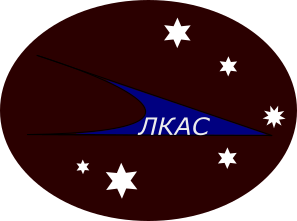Libriran Space and Aeronautical Secretariat
The Librira Space and Aeronautical Secretariat ( Libriran: Либриранский космический и авиационный секретариат), is a Libriran Aeronautical research and development agency that is part of the Libriran government. The Secretariat handles Libriran space programs, and assists in the dvelopment of new rocket, and of aerospace technology. Originally called the Libriran Aeronautical Research Comissisariat; it's role and breadth was expanded in 1948, when the numerous advances in Rocketry in the later part of the 2nd Global War made it clear there was further scientific and military application for rocketry, particularly in the 'extreme altitude regime'. The Secretariat operates numerous tests sites and Launch areas, for space launches and their various construction and reserach infrastructure. The Secretariat has besides operating almost all of Librira's space launches, also made contributions to Librira's First Super-Sonic Aircraft, First ICBM, Long range aviation, and high altitude research and aerodynamics.
History
Commisisariat
First founded in 1919 the original Aeronautical reserach group was a small group of Librira's early aviation pioneers. Their primary purpose was to provide centralised testing and development assitance to the various new Aircraft design syndicates and firms. The Comissariat was given funding to operate Librira's first wind tunnel, although a scale tunnel, with its first full sized 'high speed tunnel' (capable of speeds up to 200 mph) coming later in 1924. The Comissariat helped make huge strides with its avaiability of usage of its testing infrastruce and design support. It helped develop efficent cowling for aircraft engines, more efficent airducts for intake or cooling, as well as developing airfoils for various intended flight regimes, many of these same developments are still actively used in modern Libriran aircraft, partiuclarly in military and commercial aircraft.
Secretariat
During the 2nd Global War, the Libriran military began to deploy rocket artillery, the prototype for these types of smaller rockets, and their engines had been developed by the LARC, however as the war continued and experiments with larger and larger rockets yielded higher and higher altitudes and thus range, along with the deployment during the war of early ballistic missiles, convinced the People's Congression that Commissariat would need to be enlarged to continue its exsisting programs and also focus on 'extreme-altitude' rocketry. It was formerlly re-established as a secretariat on October 5th, 1948, and inherited all of its former testing facilities, and a greatly expanded budget, to build new rocket test sites and development areas.
Early Space Program
Due to the initially paradigm shifting nature ICBMs could have on the military sphere, it was decided to initially disguise the rocket programs goals as part of a scientific exercise, with no mention of its potential military applications. Many of Librira's first rockets were crude copies of those seen during the war, however as launches were attempted more experience was gained and soon the first all-libriran rocket was built the R-1 (Rocket), although still outwardly similiar to the previous copies, it featured all libriran parts and a substainially modified engine, that sought to be more efficent, although when it worked it was, poor metallurgy in its components ensured it failed only 20 seconds after taking off. Problems were eventually rectified and culminated with Librira's first 'space rocket' The R-1-5 which made it officially into 'space' before coming back down to earth. The success would be developed into future rockets that would build into the first Libriran orbital vehicles, and ICBMs, part of the R-9 family of rockets.
